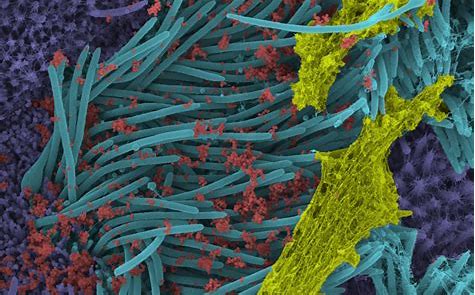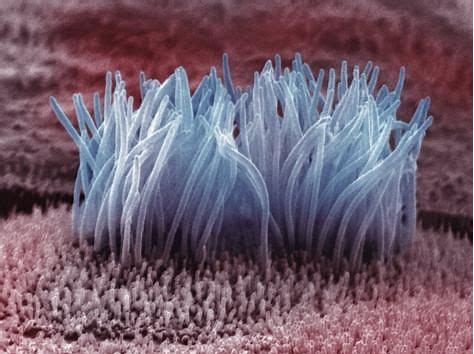
The Future Of Ciliary Proteomics: How Technology Is Advancing Research
Ciliary proteomics research is advancing at an astonishing rate. With the emergence of sophisticated new technologies, researchers are now able to study cilia in unprecedented detail and uncover its many mysteries. In this article, I will explain how technology has revolutionized our understanding of cilia and what the future holds for ciliary proteomics research.
As a ciliary proteomics researcher, I am constantly amazed by how far we have come since my early days working with these tiny organelles. When I first started out, we were limited in terms of the techniques available to us; most studies relied on manual laborious methods such as western blotting or immunofluorescence microscopy. But thanks to recent technological advances, we can now investigate cilia at a molecular level with much greater clarity and accuracy than ever before.
Today’s cutting-edge tools allow us to delve into areas that would have been previously impossible or too time consuming to explore – from utilizing next-generation sequencing (NGS) platforms for large-scale analysis, to using cryo-electron microscopy (CryoEM) for high-resolution imaging of individual proteins within the cilium itself. We’ve also seen rapid advancements in imaging technologies which enable us to visualize interactions between different components within the cell – opening up exciting possibilities for further discovery.
Overview Of Ciliary Proteomics
Ciliary proteomics has become increasingly important for understanding the function of proteins in cellular pathways. While some people may think that ciliary proteomics is too complex or technical, I believe it’s an essential tool for advancing our knowledge of how cells and organisms work.
By studying protein expression and post-translational modifications, we can gain insight into how mutations affect gene activity. Proteomic methods such as 2D gel electrophoresis, mass spectrometry, and immunoblotting allow us to measure these changes at a molecular level.
Additionally, computational approaches are being used to analyze large datasets generated by high throughput sequencing technologies. All these techniques offer great potential for uncovering new insights into the mechanisms underlying ciliary proteomics.
In order to fully understand the role of cilia in human health and disease, there needs to be further advances in research technology so that researchers can more accurately identify the proteins involved in ciliary functions. This article will discuss current technological developments that have revolutionized the field of ciliary proteomics and provide an outlook on what possibilities lie ahead.
Technological Advances In Research

The advancements in proteomics technology have revolutionized ciliary research. Data analysis is no longer restricted to manual methods and computational tools have enabled researchers to identify, characterize, and quantify proteins with unprecedented accuracy. With the development of experimental methods such as mass spectrometry, immunohistochemistry, and flow cytometry, scientists are now able to investigate dynamic changes in protein levels within a cell or tissue sample over time.
These technological advances have opened up new avenues for exploration that were previously impossible to access. For example, it has become possible to study individual cilia at an unprecedented level of detail, allowing us to gain insight into how they function in physiological processes. Additionally, these techniques can be used to understand differences between healthy and diseased cells, uncovering novel therapeutic targets for drug discovery.
Through this combination of advanced technologies and innovative approaches, we are unlocking the secrets of ciliary biology on a much deeper level than ever before. This will ultimately lead to improved diagnostics and treatments for disorders associated with cilia dysfunction.
Implications For The Field
The implications of ciliary proteomics technology for the field are immense. Research in this area is advancing rapidly due to new technological advancements, and with it comes a variety of opportunities for researchers. Here are some key advantages that come with using this type of technology:
- Faster data collection – By collecting more detailed and accurate data faster than ever before, researchers can quickly make discoveries and develop therapies much sooner than they could otherwise.
- Improved accuracy – Ciliary proteomics allows scientists to identify specific proteins at a level far beyond what was previously possible. This means that research results will be more reliable and reproducible, allowing them to be used to create better treatments or preventive measures.
- Reduced cost – With automated methods available, labor costs associated with manual sample processing can be reduced significantly. Additionally, automation also reduces time spent on experiments which leads to lower overall costs.
- Broader applications – As technologies improve, so does the range of applications for ciliary proteomics research. New techniques such as single-cell analysis allow us to study individual cells instead of just large populations of cells, opening up entirely new areas of exploration within the field.
In short, ciliary proteomics has revolutionized research by providing unprecedented levels of accuracy and speed while reducing costs and broadening application scope. It’s clear that these advances have had a tremendous impact on the field and will continue to do so in the years ahead as we explore new avenues of discovery enabled by this powerful toolset.
Conclusion
Ciliary proteomics is an incredibly exciting field of research. As technology advances, the potential implications for this area of science are extraordinary. From better understanding disease to developing tailored treatments, ciliary proteomics has a bright future ahead.
The power of technological advancements can never be underestimated; it has revolutionized how we investigate and analyze data in a myriad of ways. By harnessing the potential of these new tools, researchers have been able to explore and develop insights into complex biological systems like never before. With continued investment in cutting-edge technologies, there’s no limit to what the future may hold for ciliary proteomics.
As a scientist dedicated to advancing our knowledge on cilia related diseases, I’m humbled by all that we have achieved – but more excited about where we’re headed next. Through further exploration with innovative techniques, I believe we’ll continue to make groundbreaking discoveries that will shape the course of medicine and healthcare as we know it today.
